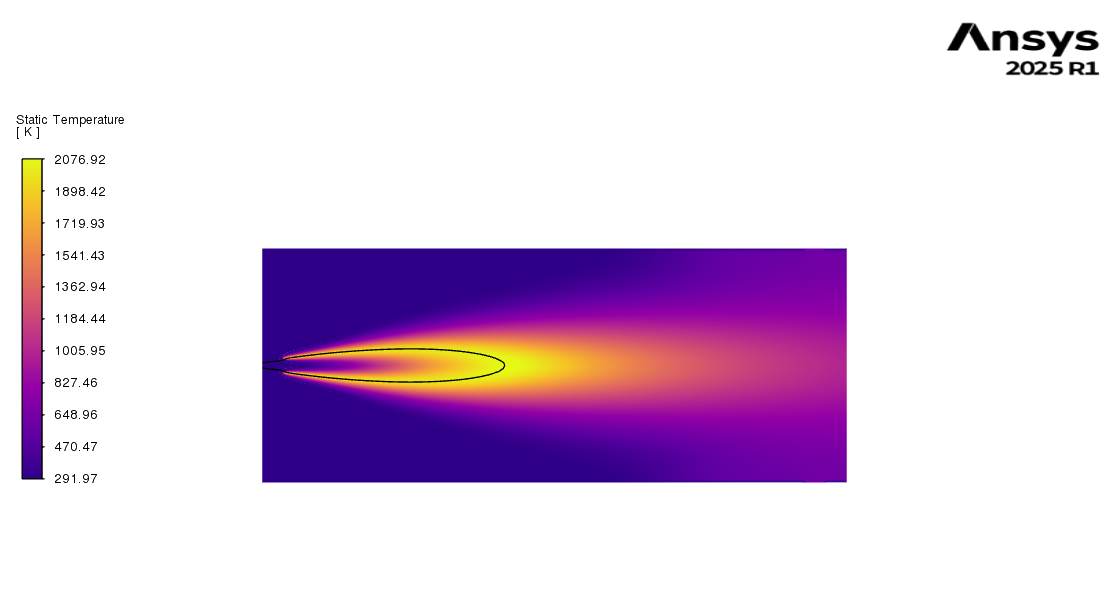-
-
October 15, 2025 at 10:47 am
jan.skibbe
SubscriberHi there,
I am modeling the DLR A flame in Fluent with the EDC species transport model using the GRI-Mech 3.0 Chemkin mechanism.
To get the EDC model started properly, I ran an EDM simulation before. So I have an initial temperature field for the combustion with EDC.
The EDC model is used with constant coefficients (standard values):
- Flow iterations per chemistry update: 1
- Aggressiveness factor: 0.5
- Temperature threshold: 200 K
- Volume fraction constant: 2.1377
- Timescale constant: 0.4083
For turbulence modeling, the standard k-epsilon with standard coefficients is used.
The mesh consists of 126,875 cells with a max. aspect ratio of ~16 and orthogonality of 1.
- Axis symmetric
- Domain dimensions
- Diameter: 400 mm
- Length: 1000 mm
While running the simulation, the flame lifts off, and with proceeding iterations, the flame extinguishes.
The following attempts have been tried without success:
- Reduction of URF
- Methods: all FOU and pressure: standard
- Pressure velocity coupling: SIMPLE and all FOU
- Prescribed method of only solving species equations: https://innovationspace.ansys.com/forum/forums/topic/edc-modelling/
Only the adaptation of the timescale constant in the EDC model to 0.2 leads to a non-extinguishing flame. But this method seems not to be correct, and I was just trying to figure out whether a flame is possible.
Are there any points I am missing to get the EDC model running sufficient?
Many thanks in advance.
-
October 15, 2025 at 5:12 pm
Essence
Ansys EmployeeHello,
It is crucial to have a mesh resolution that is sufficient to capture the flame dynamics accurately. Automatic mesh refinement can be beneficial by focusing on areas with high gradients of temperature and species concentrations.
Moreover, improving the EDC model's performance can be achieved by adjusting the reaction time-scale factor. A smaller time-scale factor can enhance the model's ability to capture re-ignition events, potentially preventing premature flame extinction in simulations.
-
- You must be logged in to reply to this topic.


- air flow in and out of computer case
- Varying Bond model parameters to mimic soil particle cohesion/stiction
- Eroded Mass due to Erosion of Soil Particles by Fluids
- I am doing a corona simulation. But particles are not spreading.
- Centrifugal Fan Analysis for Determination of Characteristic Curve
- Guidance needed for Conjugate Heat Transfer Analysis for a 3s3p Li-ion Battery
- Issue to compile a UDF in ANSYS Fluent
- JACOBI Convergence Issue in ANSYS AQWA
- affinity not set
- Resuming SAG Mill Simulation with New Particle Batch in Rocky

-
4077
-
1487
-
1318
-
1156
-
1021

© 2025 Copyright ANSYS, Inc. All rights reserved.








